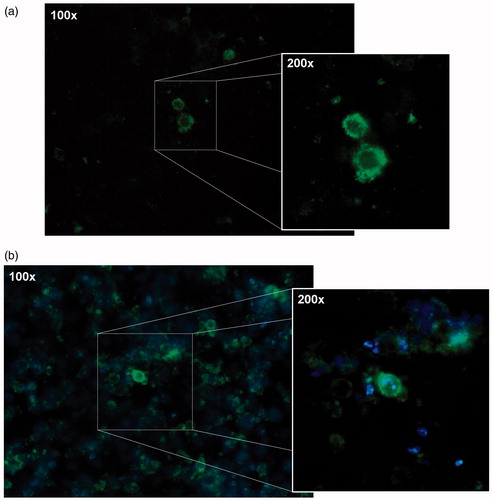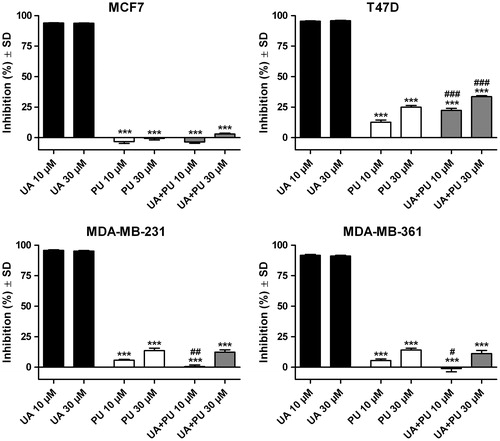Figures & data
Figure 1. Distribution of polyurethane structures for: polyurethane nanoparticles containing oleanolic acid (OA + PU), polyurethane nanoparticles containing ursolic acid (UA + PU) and empty polyurethane nanoparticles (PU). Parameters used were: 25 °C, 190 channels, 80% laser power, 18 μs time interval, continuous acquisition mode and Log-normal dispersion.
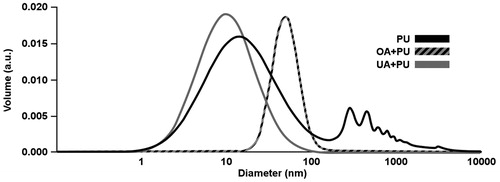
Figure 2. Scanning electron microscopy (SEM) pictures for: (a) oleanolic acid (OA); (b) polyurethane nanostructures containing oleanolic acid (OA + PU); (c) ursolic acid (UA); (d) polyurethane nanostructures containing ursolic acid (UA + PU); (e) empty polyurethane nanostructures (PU).
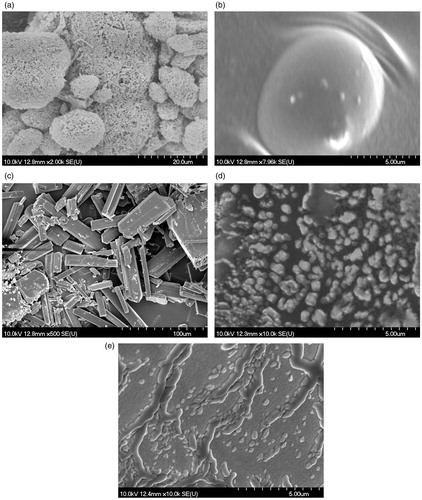
Figure 3. Differential scanning calorimetry (DSC) curves of: (a) oleanolic acid (OA) (3.1) and ursolic acid (UA) (3.2), (b) empty polyurethane nanostructures (PU) (3.1; 3.2), (c) polyurethane nanostructures containing oleanolic acid (OA + PU) (3.1) and ursolic acid (UA + PU) (3.2). Argon was used as carrier gas, the temperature range was between 25 up and 300 °C, and the heating rate was 5 °C min − 1, while the sample weight was 2–5 mg.

Figure 4. X-ray diffractograms of: (a) oleanolic acid (OA) (4.1) and ursolic acid (UA) (4.2), (b) empty polyurethane nanostructures (PU) (4.1; 4.2), (c) polyurethane nanostructures containing oleanolic acid (OA + PU) (4.1) and ursolic acid (UA) (4.2). The measurements were conducted with a 50 kV tube voltage and tube current of 40 mA in step scan mode (step size 0.035, counting time 1 s per step).
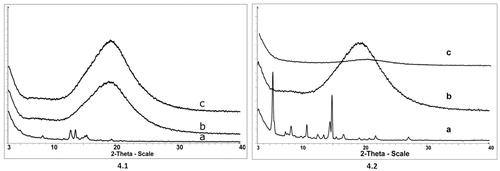
Figure 5. Microscopic images of MCF-7 human breast cancer cells incubated with coumarin-6 loaded nanoparticles after (a) 24 h and (b) 48 h.
